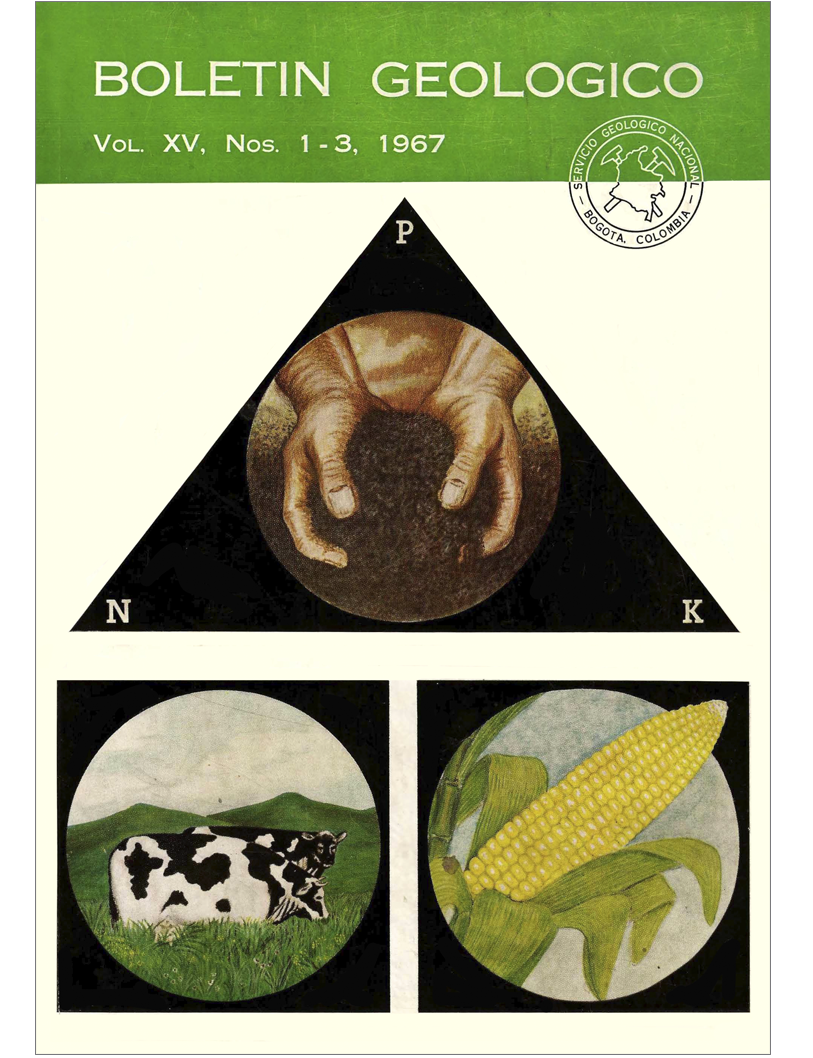Preliminary concepts on fertilizer development and use in Colombia
DOI:
https://doi.org/10.32685/0120-1425/bolgeol15.1-3.1967.215Keywords:
Colombia, agricultural production, fertilizers, socio-economic development, demographyDownloads
How to Cite
Issue
Section
Published
Abstract
The last official census (1964) established a population of 17.2 million for Colombia with an annual population growth of 3.1 percent. This makes it possible to predict a population of 27 million a decade from now and around 50 million by the end of this century. The current area under cultivation is approximately 3.5 million hectares. To supply this growing population and at the same time earn the foreign exchange required by an expanding economy, agricultural production will have to increase enormously. The most effective solution to this end would be the scientific application of fertilizers in adequate amounts. A review is made of available fertilizers, scarce or absent fertilizers, and substitution possibilities are indicated. In such a mountainous region as Colombia, the cost of internal transport is critical for the wide distribution of fertilizers, so it is suggested that the combination of transport by pipeline and by slabs in navigable rivers is a solution to this important economic problem.
References
HAYNES, JAMES L., Agricultural Development in Colombia, Sector Analysis and Program Recommendations, US Agency for International Development, pp. 1-128, 1966.
CEPAL/FAO, National Fertilizer Supply Situation, 1966.
HARRINGTON, J. F., WARD, D. E., and McKELVEY, v. E., Sources of Fertilizer in South America - A Preliminary study, U.S. Geological Survey, Bull. 1240, pp. 1-66, 1966.
Y0UNG, R. D., Production of multi-nutrient fertilizers, Seminar for Latin American Executives, Muscle Shoals, Alabama, 1967.
U. S. Bureau of Mines, Mineral Trade Notes, V. 64, N° 10, p. 25, 1967.










